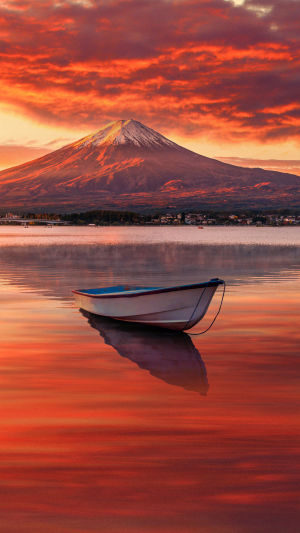Hello, Lykkers!
At 3,776 meters (12,389 feet), this majestic stratovolcano beckons adventurers from around the world!
If you're planning to hike Mount Fuji (or even if you are not - yet), here's everything you need to know to make your journey memorable and successful.
<h3>How to get to Mount Fuji</h3>
You can arrive by bus or train directly from the main cities. Kawaguchiko Station and Fujisan Station are both on the Fujikyu Railway Line and serve as access points to Mount Fuji.
<b>Climbing Start Point:</b> The climbing starting point is Fuji Subaru Line 5th Station.
<b>JR Pass:</b> If you have a JR Pass, it can cover the train portions of the trip, but not the Fujikyu Railway or buses to the 5th Station.
<b>Kawaguchi Station:</b> Kawaguchiko Station is larger and has more facilities, including a tourist information center, restaurants, shops, and luggage storage services. It is close to Lake Kawaguchi, and the area offers beautiful views of Mount Fuji and the lake, making it a popular spot for sightseeing and photography. It has more frequent and various connections to the Fuji Subaru Line 5th Station, other attractions in the Fuji Five Lakes area, and direct buses to Tokyo and other cities.
<b>Fujisan Station:</b> It is located in the city of Fujiyoshida, closer to the base of Mount Fuji. Buses to the Fuji Subaru Line 5th Station are available, but they may be slightly less frequent than from Kawaguchiko.
<h3>The Best Time to Climb</h3>
The official climbing season for Mount Fuji runs from early July to early September. During this period, the trails are free of snow, and the weather conditions are most favorable. Mountain huts and facilities are open, ensuring a safer and more enjoyable hike. Outside of this window, the climb becomes significantly more dangerous due to harsh weather and closed facilities.
<h3>Choosing Your Trail</h3>
Mount Fuji offers four primary trails, each with its unique features:
<b>1. Yoshida Trail</b>
The Yoshida Trail is the most popular route, with numerous mountain huts and facilities along the way. It's ideal for beginners and those seeking a more social climbing experience. The descent follows a different, sandy path to minimize erosion.
<b>Starting Point:</b> 5th Station
<b>Elevation Gain:</b> 1,450 meters (4,757 feet)
<b>Distance:</b> 11 km (6.8 miles)
<b>Duration:</b> 5-7 hours ascent, 3-5 hours descent
<b>2. Subashiri Trail</b>
This trail is less crowded and offers a unique experience of hiking through lush, dense forests before reaching the barren, volcanic terrain. The trail is well-marked, though it becomes steeper and rockier as it approaches the Yoshida Trail.
<b>Starting Point:</b> 5th Station
<b>Elevation Gain:</b> 1,800 meters (5,906 feet)
<b>Distance:</b> 12 km (7.5 miles)
<b>Duration:</b> 6-8 hours ascent, 3-5 hours descent
<b>3. Fujinomiya Trail</b>
This is the shortest route to the summit, making it a favorite for those with limited time. However, it is extremely steep, and it is recommended for experienced hikers. You can find several huts along the trail, providing rest, food, and overnight accommodation.
<b>Starting Point:</b> 5th Station
<b>Elevation Gain:</b> 1,400 meters (4,593 feet)
<b>Distance:</b> 8.5 km (5.3 miles)
<b>Duration:</b> 4-7 hours ascent, 2-4 hours descent
<h3>Tips for a Successful Hike</h3>
<b>Stay Informed:</b> Check weather forecasts and trail conditions before you go.
<b>Travel Light:</b> Carry only essentials to make your hike easier.
<b>Tickets:</b> It is recommended to reserve bus tickets in advance, especially during the climbing season.
<b>Respect the Mountain:</b> Follow the "leave no trace" principles to preserve the natural beauty of Mount Fuji.
<b>Safety First:</b> Don't rush; stay on marked trails and heed any warnings or advice from local authorities.
Here you have it! Your complete guide for your perfect hike! What are you waiting for? Your next adventure is waiting for you!
Wish you the best of times on the most famous peak in Japan, bye Lykkers!





